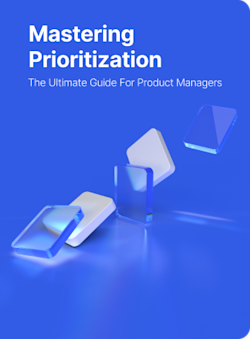The Four Disciplines of Execution (4DX)
The 4 Disciplines of Execution definition
The 4 Disciplines of Execution (4DX) are a series of tasks an organization can use to increase strategic execution. Created by Chris McChesney, Sean Covey, and Jim Huling, the framework ensures that the most important work gets the focus and priority it requires for success. This allows organizations to be more ambitious and achieve their goals.
The 4 disciplines explained
Focus on the wildly important: Choose one goal at a time to work towards. Narrowing your focus will ensure the goal is achievable because there are no distractions. The Wildly Important Goal (WIG) should be simple but essential.
Act on the lead measures: Lead measures describe activities or sub-goals you can act upon. A good lead measure will predict success for the results you’re after.
Keep a compelling scoreboard: Understanding progress is key to motivating your team. A simple scoreboard can help the team understand how to move forward.
Create a cadence of accountability: Teams should meet at least once a week for a “WIG session.” During this session, the team will review their commitments from the previous session, update the scoreboard, and set commitments for the next session.
What are the benefits of the 4 disciplines approach in product management?
Here are just a few benefits of using the 4 Disciplines of Execution in product management:
Better prioritization
4DX provides a clear focus by identifying the most critical goals, allowing teams to concentrate on high-impact activities. It also establishes lead measures, which enable proactive progress tracking and early identification of potential obstacles.
Better accountability
The 4DX approach promotes a culture of accountability. Team members take ownership of their responsibilities and results, similar to agile methodologies. This ensures all team members share their successes and failures as a cohesive unit.
Better team engagement
4DX fosters a sense of engagement and collaboration among team members as they work together towards shared objectives. The approach encourages regular reviews and adjustments, ensuring teams stay adaptable and responsive to changing market dynamics.
Better workloads
4DX also helps prevent teams from feeling overwhelmed because it only emphasizes a few crucial goals at a time. This also helps increase the quality of work, as efforts are channeled into activities that align with overall strategic priorities.
How to identify your wildly important goals
Selecting your Wildly Important Goals is crucial to the success of your project when using the 4DX framework. Here’s how you choose them:
Identify goals: As a team, select the most important goal of the project. You can add a second goal, but select no more than two because we want to narrow our focus. This will require a prioritization session before the WIG session.
Find your lead indicators: Lead indicators measure the activities that feed success with the lag indicators. Lag indicators are fine to track, but you must identify and achieve lead indicators to reach that stage.
Create scoreboards: Scoreboards are a great way to track progress and motivate the team. Asking your team members to individually update their section of the scoreboard can make this feel a little more fun.
Create accountability: Pair up team members with an accountability partner, a peer that will help them remember the goal and cheer them on. At the end of each week, they should report successes and discuss roadblocks.
General FAQ

Glossary categories
Prioritize with confidence

Experience the new way of doing product management








